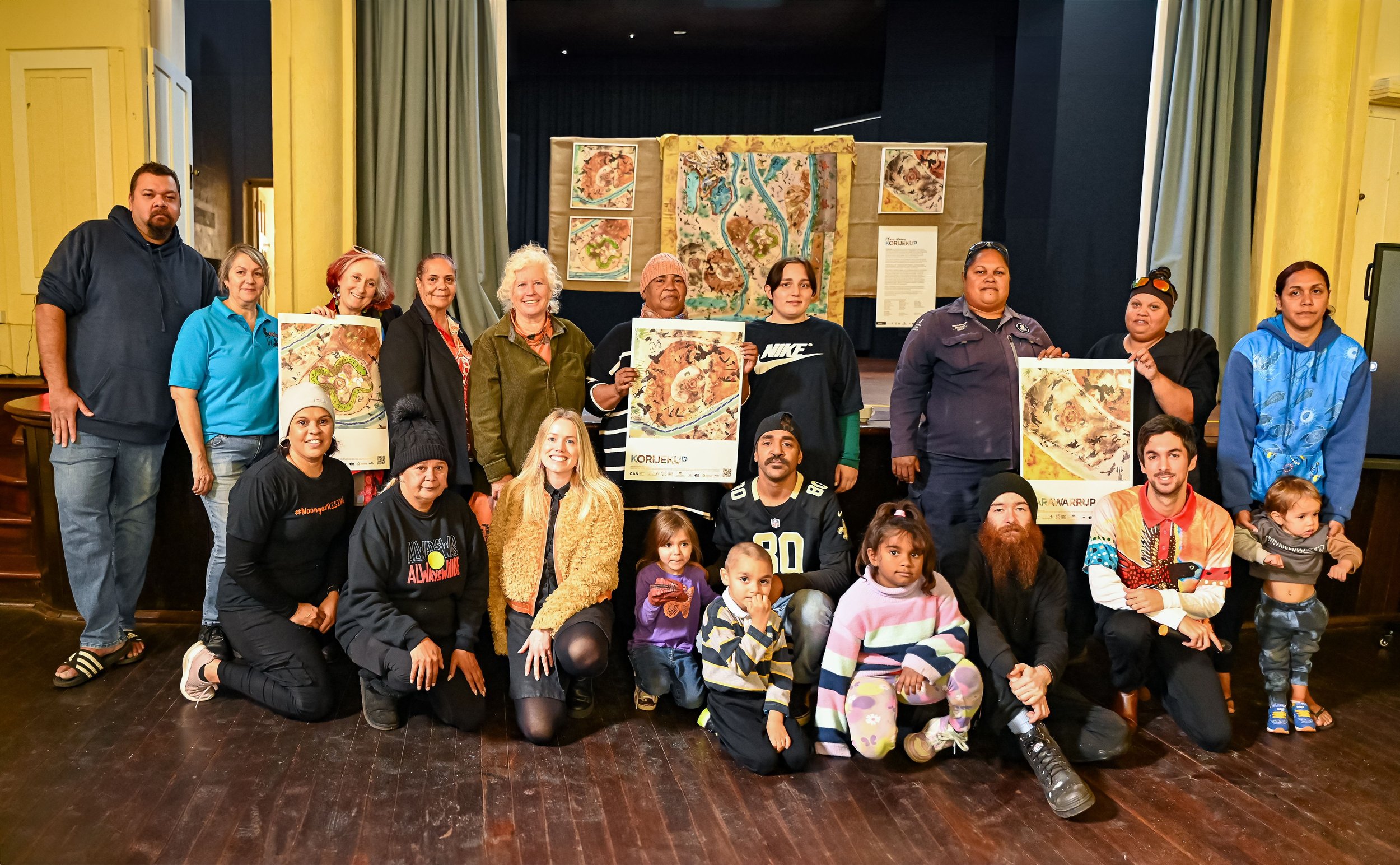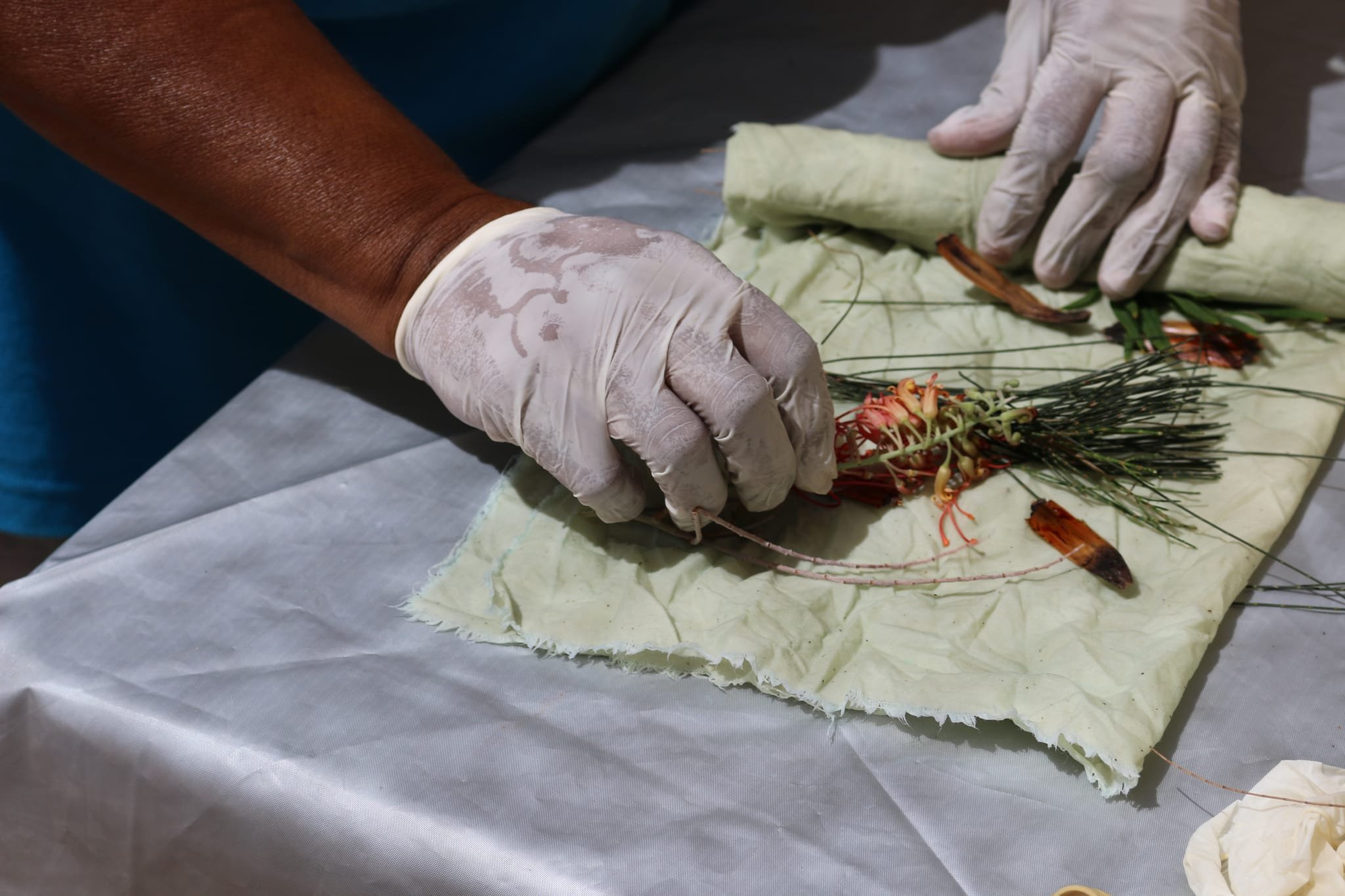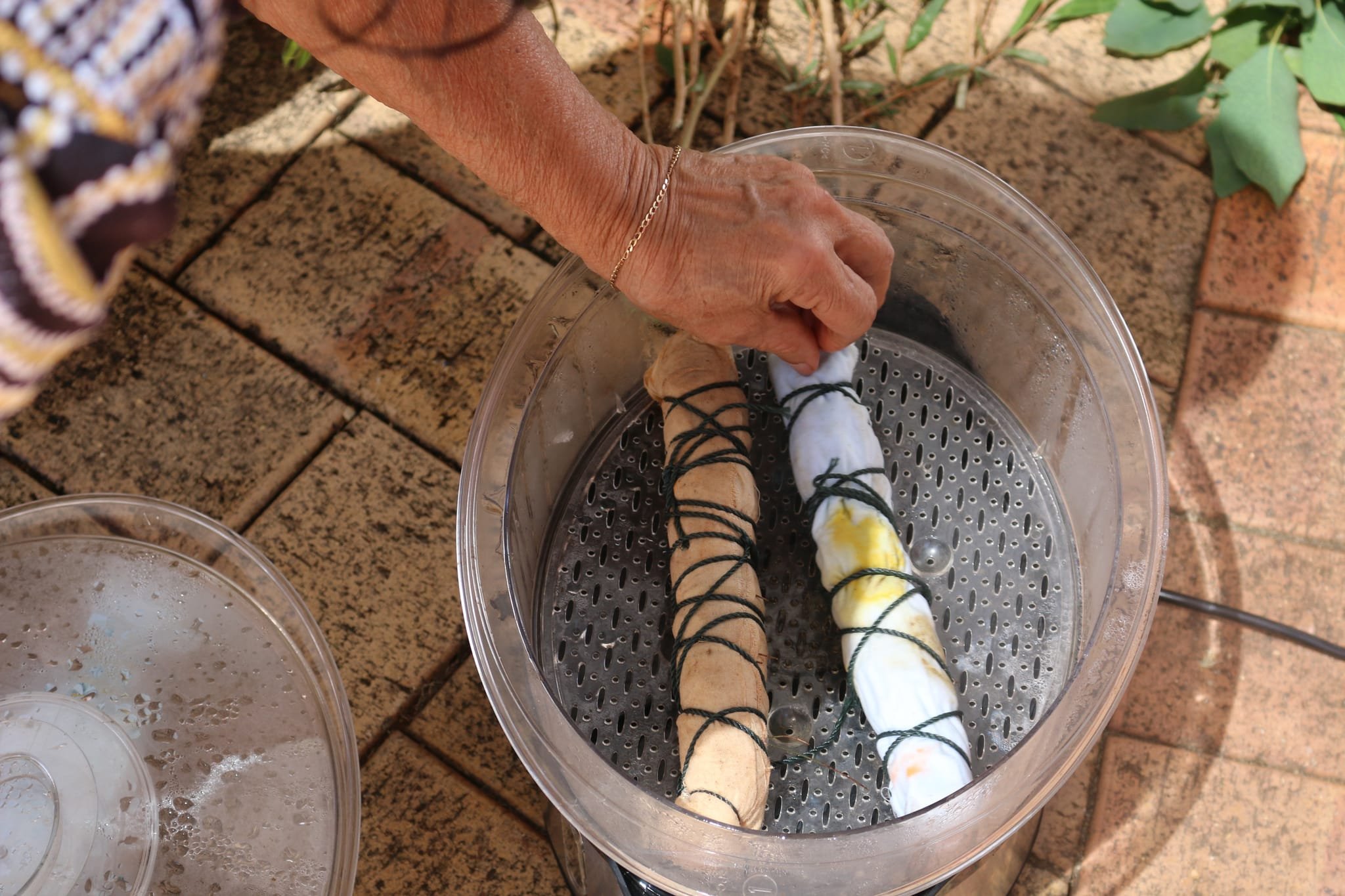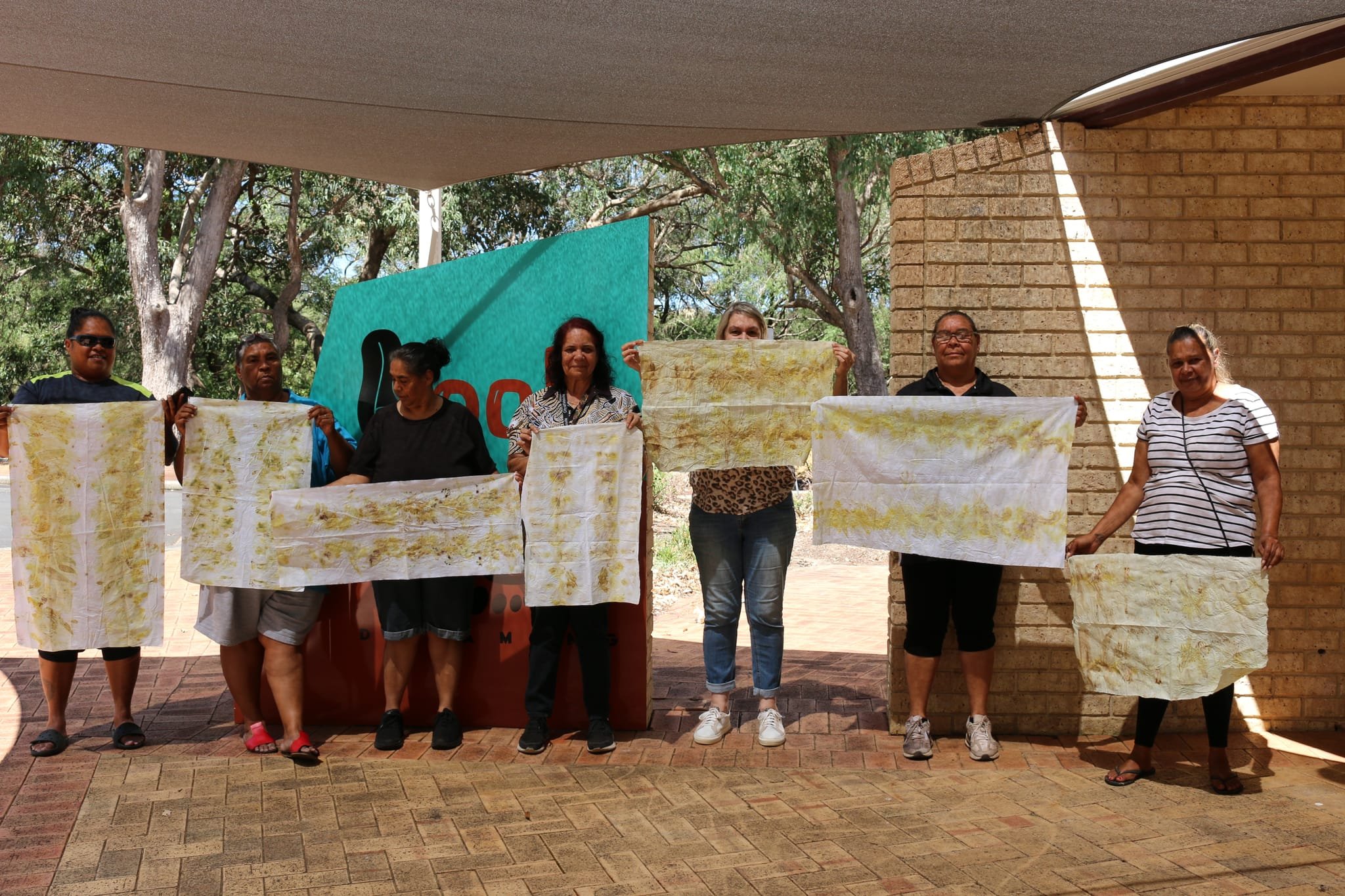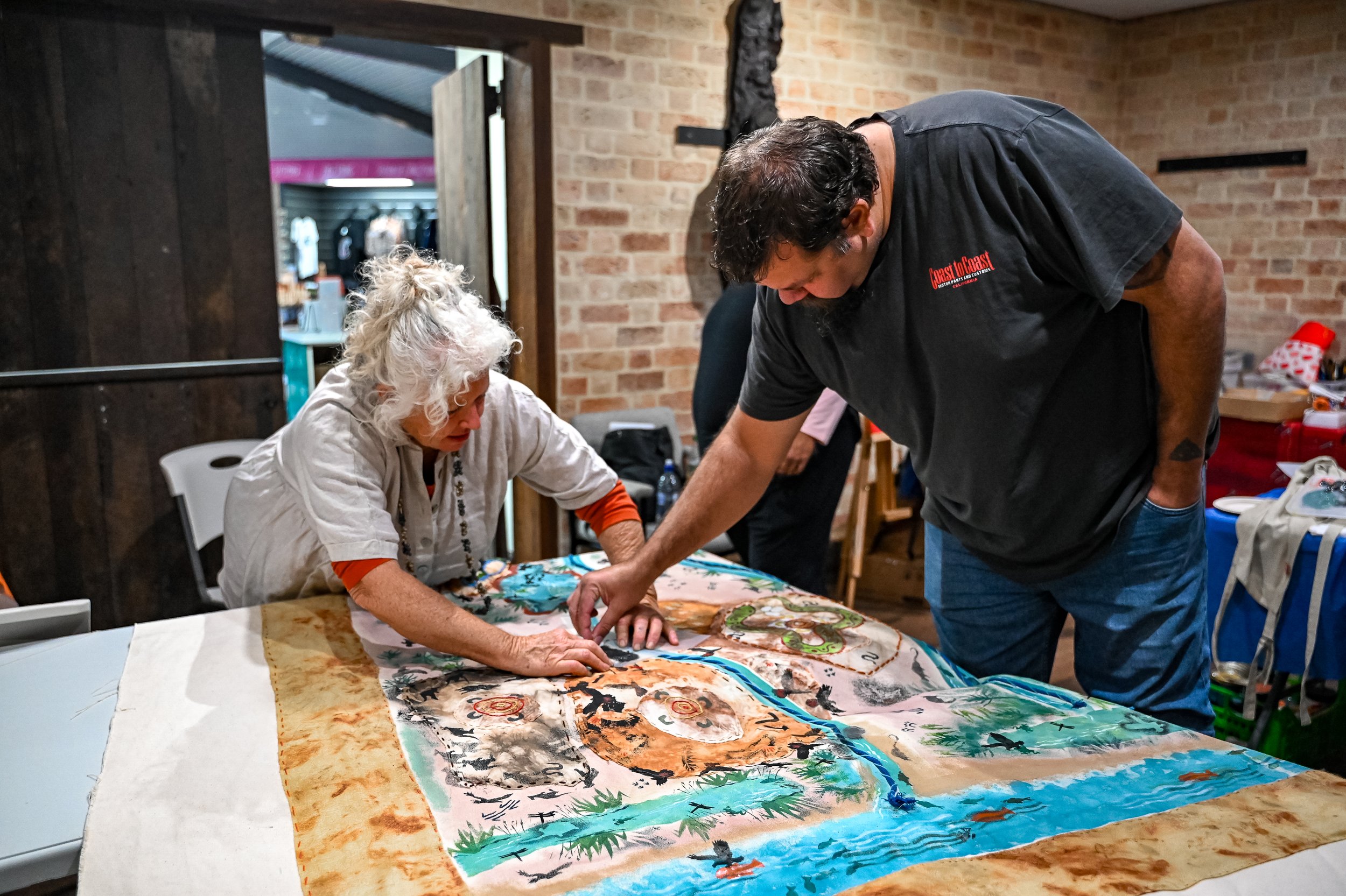Place Names Korijekup
Hear from our locals…
Listen to Nan Melba Wallam, Aunty Sharon Cooke, Aunty Lesley Ugle, Shannon Ugle and Brad Vitale as they share the meanings behind place names in Harvey
Harnessing contemporary art forms to celebrate Noongar language, heritage and culture, Place Names combines community-held knowledge with academic rigour to unpack the original meanings behind Noongar placenames.
Inspired by Len Collard’s seminal research which highlights that every Noongar placename is a sentence often describing a place’s meaning, Community Arts Network and Moodjar Consultancy have developed a community-led model that decodes the ancient meanings embedded in placenames, through artistic expression. The process puts Noongar knowledge at the forefront, drawing on local Elders’ and Traditional Custodians’ language and memories as primary sources, while drawing on historical documents and wordlists created by European settlers, to uncover the meaning of the placename.
Working through this model, the community reaches consensus and begins the creative process resulting in collaborative artworks – developed by local Elders, students and emerging creators, alongside professional artists. This powerful collective action promotes intergenerational learning, a shared understanding of cultural identity and reconciliation as the use of Noongar placenames spreads throughout the wider community.
The seeds for this 8th iteration were sown when CAN received an enquiry from the Harvey Aboriginal Corporation, asking if there was a possibility of conducting the project with them.
After community consultation, CAN and Moodjar partnered with Harvey Aboriginal Corporation, and in November 2023 decoding workshops began. Led by Moodjar, these workshops were attended by community members, Elders, Traditional Owners and knowledge holders connected to Harvey. Over 4 workshops many placenames were researched and the results will be revealed once the project is completed. For the community, seeing representatives from multiple generations was just as important.
Centring and celebrating Noongar language and knowledge, Place Names Korijekup decoded ancient meanings embedded in Noongar placenames on Bindjareb Country. The vision of Place Names was one of language revival, truth-telling and healing.
After community consultation, CAN and Moodjar worked in partnership with the Harvey Aboriginal Corporation to manage this community-led project. Partnering with HAC enabled Place Names Korijekup to be led by local knowledge holders and Elders.
The unpacking of the meanings of placenames took place during a series of decoding workshops attended by a strong group of Bindjareb Elders, Traditional Owners and knowledge-holders. Once the decoding phase was completed, community living on, or connected to, Bindjareb Country were offered the opportunity to take part in community art workshops with artists, to collaboratively create artworks that explore the meanings of the local placenames uncovered in the decoding sessions.
Rich in storytelling, the cultural mapping stage of Place Names Korijekup has brought together Noongar Elders, Traditional Owners, knowledge-holders, artists and community members from many generations.
In all Place Names projects the cultural mapping phase is used to create collaborative community-led artworks. These artworks draw on the meanings of ancient Noongar placenames that have been researched and translated during the decoding phase of the project, as well as stories about those places shared during that process. Cultural mapping incorporates all the layers that exist in the landscape, physically and metaphorically mapping First Nations language, knowledge, stories and culture into the artworks.
Led by artists Geri Hayden and Sandy McKendrick, Place Names Korijekup’s cultural mapping phase resulted in an intricately dyed, stitched, printed and painted large-scale canvas map of Bindjareb Country. It depicts the locations of the decoded placenames, as well as significant locations such as waterways and historical campsites.
Vibrant and textured, this map is layered both physically and metaphorically; embedded in this map are ancient stories, cultural knowledge and traditions that will now be available to future generations who live on Bindjareb Country.
During the process of decoding ancient Noongar placenames of this area, conversation often included discussions about historical camps. A selection of these were then re-established on the canvas map, helping to reassert the significance of these places for the community.
For community members this project offered the opportunity to learn and/or practise eco-dyeing, stencilling and printing skills during art workshops. These skills were then used to explore, interpret and depict traditional Noongar stories that have been handed down for generations onto the map. Stencils were used to portray animals that were printed onto the canvas, eco-dyed fabric was stitched on to the canvas to represent topography, and waterways and other landscape features were depicted with paint.
As part of the process, we also recorded a range of community members sharing the meaning of these placenames, as well as other stories and memories associated with each site, which we will share with you now.
This project brought together community of all ages and experiences, uniting around the beautiful places we have right here. It was also an incredibly healing experience and we hope that sharing this project, this map, these videos, will bring healing and unity too.
